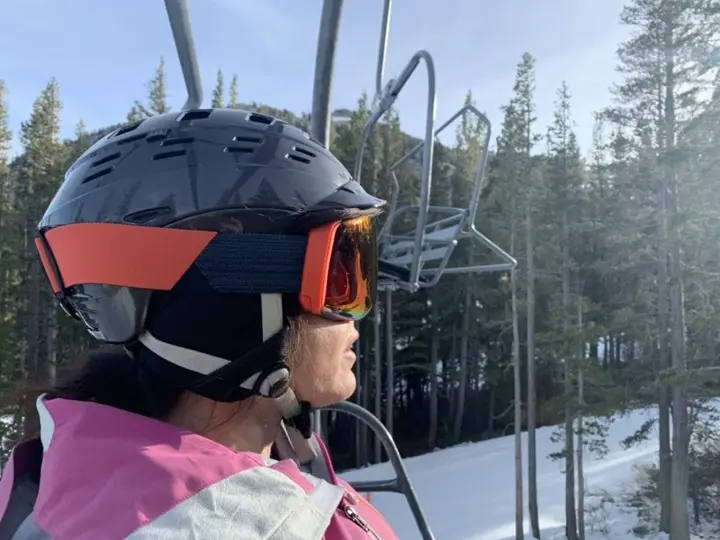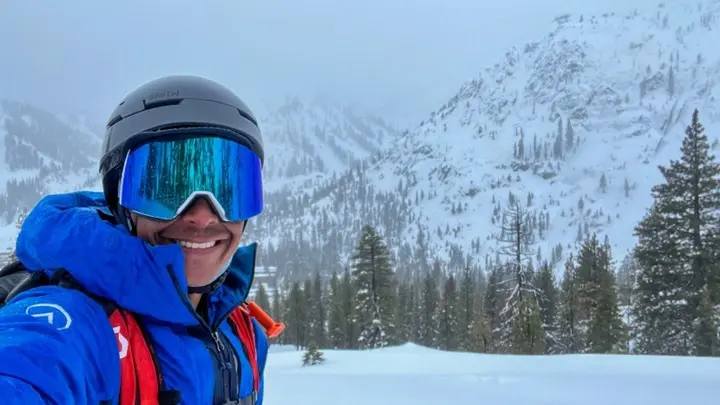You know, skiing and snowboarding aren’t just about how good you are on the slopes. The gear you bring makes a huge difference. Especially when it comes to eye protection. You won’t realise how much the snow glare, wind, and even the sun could mess with your eyes until you spend a full day out there.
That’s why it’s so important to choose an outdoor ski goggle that fits well and actually helps you see better. Some of the new ones even adjust to different light, and they’re way more comfortable than the old ones we used to wear.
Types of Ski Goggles

It’s important to know that there are different types of goggles out there, so taking a little time to learn about them really helps. That way, you’ll know exactly what to look for and can pick the outdoor ski goggle that suits you best.
Framed vs. Frameless
So, what’s the deal with framed and frameless ones? Is there actually a difference?
Yes, they definitely are. Those that have a solid border around the lens make them feel a bit more structured and secure.
And frameless ones feel much lighter and look super sleek. Plus, you get a wider view since nothing’s blocking the edges. Both work great; it just depends on what feels better on your face and what kind of look you’re going for.
Interchangeable Lenses
Okay, have you seen those with extra lenses? They are made purposely like that. Those are the ones with interchangeable lenses. You can swap them depending on the weather. Like different ones for sunny or cloudy days. Because bright sun needs darker lenses, and low-light days work better with yellow or clear ones, that’s a pretty smart design. So, it’s like having one pair that does everything.
OTG Goggles (Over The Glasses)
OTG ski goggles are made to fit right over your regular glasses. So you don’t have to choose between seeing and comfort. You can wear both your regular sunglasses and OTG goggles over your regular ones, without a problem. They’ve got extra space inside and little cutouts so they don’t press on your frames. OTG is the way to go if you wear specs. Total lifesaver on the slopes.
Spherical vs. Cylindrical Lenses
So, what’s the difference between the spherical and cylindrical lenses? So, spherical ones curve both ways, like a bubble. They give better depth and a wider view. And cylindrical snow goggles
only curve side to side. They still work great, but your view might feel a bit flatter.
So one’s more high-tech, and the other’s a bit more basic. If you want more natural vision and less distortion, go with spherical. But cylindrical ones are still solid, and usually a bit cheaper.
Lens Technology and Features

UV Protection
So, do these ski goggles actually block UV rays, or is that just a selling thing? It’s real, and super important. Snow reflects sunlight like crazy, so your eyes get hit from all angles. Without UV protection, you risk sunburn on your eyes. It’s a thing.
Also, most goggles do have UV protection, but it’s always good to double-check. Even on cloudy days, those rays get through.
Anti-Fog Coating
Many people are wondering why their goggles always fog up the second they start moving. That’s probably because they don’t have the anti-fog coating. That’s a total game changer.
Vents help, but the coating keeps the inside of the lens clear even when it’s cold and you’re sweaty. So, make sure your next pair has it. Some even have double-layer lenses to help even more.
Polarised or Photochromic Lenses
Okay, so, what’s better, polarised or those light-changing ones? Well, it depends! Polarised lenses cut glare like a boss, especially when the sun bounces off the snow.
Photochromic lenses, on the other hand, adjust to the light, so they get darker when it’s bright and lighter when it’s cloudy. They’re both awesome, it just depends on how you ride and the conditions you’re usually in.
Tint Colours
So, what’s the deal with all the lens colours? Are they just for style? Nah, each tint does something different. Yellow or gold ones are great in low light, while darker tints work best on sunny days. And it’s not just about looks, it’s about how much light they let through. Some even boost contrast so you can see bumps better. Matching the tint to the weather makes a huge difference.
Comfort and Fit
Fit matters a lot. If they pinch or slide around, you’ll be adjusting them all day. So, maybe look for different shapes until you find one that sits well. The foam padding should feel soft, not tight, and the strap should hold snug without squeezing. Also, make sure they work with your helmet, because some styles actually match up better than others.